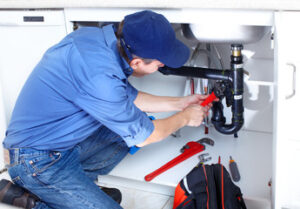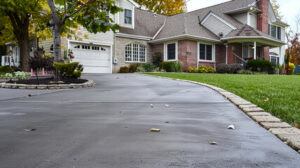A well-installed plumbing fixture goes a long way towards preventing water damage, saving money on utility bills, and reducing the risk of future leaks. That’s why it’s important to have the right tools and materials before diving into a plumbing project.

A good rule of thumb is to always have a few extra tools on hand, as you never know what might happen! Contact Plumbing Fixtures Installation Naperville IL for professional help.
Plumbing fixtures are essential components of a home or building’s plumbing system. They connect to a plumbing pipe and are used for water supply, waste disposal, and other functions that help keep occupants clean and healthy. These devices are available in a wide range of styles and designs, allowing them to enhance the aesthetics of any space.
Faucets, sinks, bathtubs, showers, and toilets are some of the most commonly used types of plumbing fixtures. These devices are often the first to break down or experience issues, so it’s important to choose high-quality models that will last for years. To ensure you’re getting the best possible fixture, consider factors like material durability, water efficiency, and style preferences.
While it may be tempting to focus solely on aesthetics, functionality should always come first. Make sure your chosen fixture is designed to meet the needs of its intended use, and look for features that make it easy to maintain and clean. For example, look for a model with an adjustable spout or a removable aerator that makes it easier to control water flow and pressure.
It’s also a good idea to select fixtures that are easy to repair and replace. This will save you time and money in the long run, especially if you’re installing new plumbing in an existing space. Additionally, remember that it’s crucial to periodically inspect your plumbing fixtures for leaks and other problems. Catching these issues early can prevent serious damage and costly repairs in the future. Taking a proactive approach to maintenance can also extend the lifespan of your fixtures and reduce your utility bills. For example, regular cleaning can help remove soap scum and other buildup that can cause fixtures to break down over time.
Preparing for the Job
Plumbing fixtures are essential for your home, providing access to water and disposing of wastewater. They also add comfort and convenience to your living spaces. However, they need to be properly maintained in order to work effectively. This requires regular cleaning and inspection, prompt repairs, and the installation of new plumbing fixtures.
Every plumbing fixture has a dedicated water supply line for delivering water and a drain or waste pipe for discharging wastewater. Each fixture also has a “flood rim” level, which is the point at which the water will overflow when the drain is clogged. This allows for a small amount of water to escape until the fixture can be manually reopened or repaired.
Many homeowners choose to replace or install new plumbing fixtures for a variety of reasons. Some do it for aesthetic reasons, while others want to improve the functionality of their bathrooms or kitchens. Others simply need to repair or replace old fixtures that have faulty components, such as leaks or rust.
Modern, efficient plumbing fixtures can help you save energy and money, while improving the look of your home. For example, replacing your showerhead with a low-flow model can reduce your water consumption and lower your utility bills without sacrificing performance or style.
When shopping for plumbing fixtures, always look for CSA (Canadian Standards Association) approval. This ensures that your new fixtures meet high safety and performance standards. Buying and installing CSA-approved fixtures will protect you from hazardous products that can cause damage or injury. In addition, a CSA-approved fixture will likely be compatible with your existing pipes. This is important because it will minimize the amount of time and money you’ll need to spend on installing new connections.
Disconnecting the Old Fixture
Plumbing fixtures are devices connected to a building’s plumbing system that serve a specific purpose related to water supply or waste disposal. They include items like faucets, sinks, bathtubs, showers, toilets, and more. These fixtures are essential in ensuring that water is delivered and wastewater is removed efficiently. Many people replace their existing fixtures due to broken components or a desire for a new design. Others choose to install new fixtures as part of a kitchen or bathroom remodel. Commercial properties can also benefit from upgrading their fixtures to improve the ambiance and functionality of their buildings.
Before starting any work on a fixture, it is important to make sure that the power is turned off at the breaker box. Once the electricity is off, it is safe to remove the old fixture. First, unscrew any screws or wire connectors that hold the fixture in place. Once the fixture is removed, the wiring can be disconnected from the ceiling. This is done by unscrewing the wire connectors and cutting a section of the wiring from the ceiling.
Once the old fixture has been disconnected, it is time to start preparing the pipes for the new one. This is a good opportunity to clean out the pipe and check for any cracks or leaks that need to be addressed. If the pipes are in good shape, it is usually safe to begin putting in the new fixture.
If there are any issues with the existing pipes, it may be a good idea to hire a plumber for repair services instead of installing a new fixture. Depending on the severity of the problem, it may be easier and more cost-effective to fix the pipes rather than replacing them entirely.
Prepping the Pipes
A properly installed plumbing fixture can add value and functionality to your home. It can also help save money by lowering your utility bills.
But a successful project requires careful planning, specialized tools and lots of elbow grease. For some homeowners, a fixture installation can be a satisfying do-it-yourself project, while for others, it can be the last thing they want to spend their Saturday on.
The key to a plumbing fixture installation that’s both safe and efficient is prepping the pipes for the new fixture. This process can prevent a range of problems from occurring, including leaks and costly repairs.
To begin, shut off the water supply to the fixture you’re about to install. You should also turn off the main water valve to the entire house, which will help reduce the risk of flooding. Next, clean the pipe surface where you’re installing the fixture with a wire brush and degreaser. It’s also a good idea to have a bucket handy for draining the excess water and a couple of towels for mopping up any accidental spills.
Finally, review the manufacturer’s instructions and specifications for your new fixture. This will help you understand how it should be installed, and provide important information like the minimum water pressure requirements. This will ensure that your fixture is properly sized and won’t cause overflow or back-pressure issues.
One final tip is to test your home’s water pressure after the fixture has been installed. Using a simple gauge, you can quickly see if the water is flowing at a normal rate or if it’s too high. If the water pressure is too high, you may need to install a pressure-reducing valve.
Installing the Fixture
A plumbing fixture is any device used for the distribution and disposal of water in a home or building. These include faucets, shower heads, toilets, sinks, and more. They play a crucial role in keeping buildings hygienic and comfortable. Without them, it would be impossible to obtain clean drinking water or dispose of waste efficiently.
Choosing the right fixtures for your home is a big decision that can impact how well your house functions and looks. It’s important to focus on functionality over style and choose high-quality materials. Remember to consider the long-term durability and maintenance requirements of each option as well. If you’re unsure where to start, consult with a professional plumber for advice and recommendations.
When deciding on new fixtures, you should also consider the benefits of selecting energy-efficient models. As the market becomes more crowded with options, it’s becoming easier to find models that save on both water and energy use. The good news is that many of these models are just as attractive as traditional ones, so you won’t have to sacrifice aesthetics to get the functionality you need.
Getting the best results from your plumbing fixture installation project requires careful planning and execution. Hiring a professional can help ensure that your new fixtures are installed properly and adhere to local codes and manufacturer specifications. They can also provide helpful advice on fixtures that will meet your needs and fit within your budget. Plus, they have access to specialized tools that homeowners may not be able to purchase or rent on their own. In addition, hiring a professional often comes with warranties on both labor and products that provide added peace of mind.


